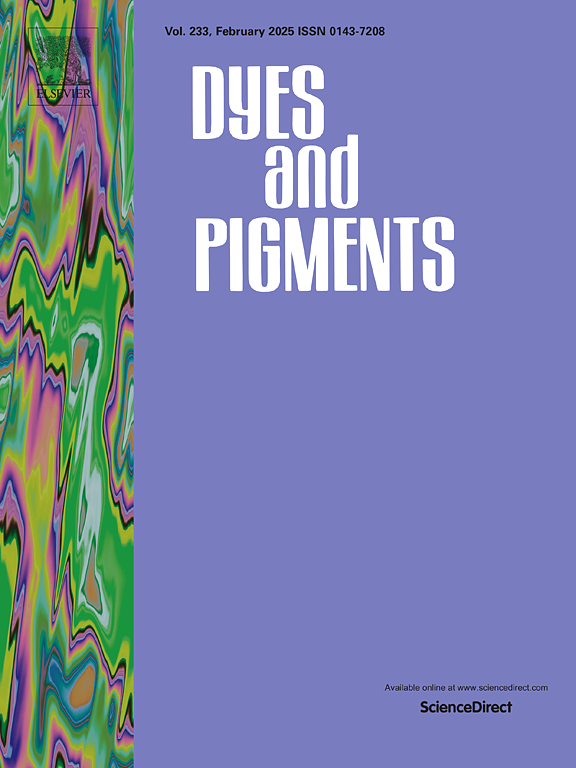A quinolinium-based colorimetric and NIR fluorescent dual-channel sensing platform for specific detection of bisulfite in food, traditional Chinese medicine and living cells
IF 4.1
3区 工程技术
Q2 CHEMISTRY, APPLIED
引用次数: 0
Abstract
Sulfur dioxide (SO2) and its derivatives are commonly used in food processing, but excessive exposure to SO2 and its derivatives can pose serious health risks. In this study, we present a near-infrared “turn-on” probe, QSB-M, for the highly selective and sensitive detection of HSO3−. The recognition of HSO3− by the probe results in a marked color change and a significant enhancement in near-infrared fluorescence, offering high sensitivity (limit of detection = 95.12 nM), rapid response, and minimal interference from environmental background signals. The recognition mechanism involves the specific addition of HSO3− to the 4-position of the quinolinium moiety, triggering an intramolecular charge transfer effect that leads to both colorimetric and fluorescence dual responses. QSB-M was also successfully applied for in situ visualization of HSO3− in various foods and traditional Chinese medicines (TCM), with recoveries ranging from 90 % to 115 %. Additionally, test strips and a smartphone-assisted sensing platform were developed, enabling direct detection of HSO3− levels in foods and TCM without the need for complex instrumentation. Importantly, QSB-M exhibits low cytotoxicity, good mitochondrial-targeting ability, and has been successfully used for the in situ detection of both endogenous and exogenous HSO3− in live MCF-7 cells.

基于喹啉啉的比色法和近红外荧光双通道传感平台,用于食品、中药和活细胞中亚硫酸盐的特异性检测
二氧化硫(SO2)及其衍生物通常用于食品加工,但过度暴露于SO2及其衍生物可造成严重的健康风险。在这项研究中,我们提出了一种近红外“开启”探针QSB-M,用于高选择性和高灵敏度的HSO3−检测。探针对HSO3−的识别导致了明显的颜色变化和近红外荧光的显著增强,具有高灵敏度(检测限为95.12 nM)、快速响应和最小的环境背景信号干扰。识别机制包括将HSO3−特异地加入到喹啉基团的4位上,触发分子内电荷转移效应,从而导致比色和荧光双重响应。QSB-M还成功地应用于各种食品和中药(TCM)中HSO3−的原位可视化,回收率为90% ~ 115%。此外,还开发了试纸和智能手机辅助传感平台,可以直接检测食品和中药中的HSO3 -水平,而无需复杂的仪器。重要的是,QSB-M具有低细胞毒性,良好的线粒体靶向能力,并已成功用于活体MCF-7细胞中内源性和外源性HSO3−的原位检测。
本文章由计算机程序翻译,如有差异,请以英文原文为准。
求助全文
约1分钟内获得全文
求助全文
来源期刊

Dyes and Pigments
工程技术-材料科学:纺织
CiteScore
8.20
自引率
13.30%
发文量
933
审稿时长
33 days
期刊介绍:
Dyes and Pigments covers the scientific and technical aspects of the chemistry and physics of dyes, pigments and their intermediates. Emphasis is placed on the properties of the colouring matters themselves rather than on their applications or the system in which they may be applied.
Thus the journal accepts research and review papers on the synthesis of dyes, pigments and intermediates, their physical or chemical properties, e.g. spectroscopic, surface, solution or solid state characteristics, the physical aspects of their preparation, e.g. precipitation, nucleation and growth, crystal formation, liquid crystalline characteristics, their photochemical, ecological or biological properties and the relationship between colour and chemical constitution. However, papers are considered which deal with the more fundamental aspects of colourant application and of the interactions of colourants with substrates or media.
The journal will interest a wide variety of workers in a range of disciplines whose work involves dyes, pigments and their intermediates, and provides a platform for investigators with common interests but diverse fields of activity such as cosmetics, reprographics, dye and pigment synthesis, medical research, polymers, etc.
 求助内容:
求助内容: 应助结果提醒方式:
应助结果提醒方式:


